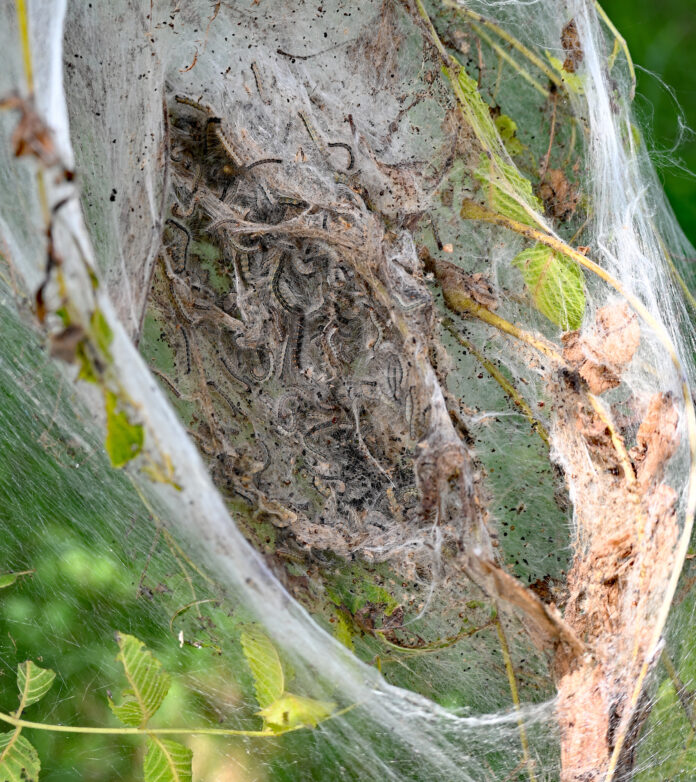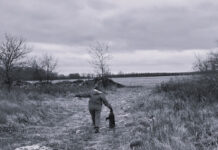
As summer begins to wane, one can’t help but notice the messy web-like structures that begin to appear near the ends of tree branches. Some trees have just one or two, others, over a dozen. Some areas seem to be more inundated while other areas have none. These silken structures are the abodes of fall webworms (Hyphantria cunea). Although the terms tent caterpillars and webworms are often used interchangeably, they are two very different species, occurring at different times of the year.
Webworms

Webworms overwinter as pupae in the leaf litter or soil. During mid-summer, they emerge as attractive fuzzy white moths with an inch-and-a-half wingspan. After mating, the female moths deposit their eggs in large groups, sometimes protecting them with a covering of scales. When the tiny caterpillars hatch after a few days, they immediately get to work. You see, fall webworms are completely gregarious and have developed a system of working together in order to survive.
Although they are most commonly found on hickories, wild black cherry and walnut, almost any species of tree will work as a host plant. As the larvae grow, they work together to encompass large sections of leafy branches with a loose webbing. This silken shelter provides protection from predators for the colony while they feed on the leaves within and also helps to regulate the inside temperature. When their food source gets used up, the caterpillars expand their web to encompass new leaves and a longer section of branch. Sometimes the webworms’ structures can span a length of 6 feet.
Webworm caterpillars have pale yellow sides, variable-colored stripes, a combination of both long and short bristles and orange heads. They are in great demand by birds which will actively tear into their nests to gobble them down in great quantities, one of the downfalls of their communal existence. After about a month of feeding, the caterpillars exit their nest, now extremely messy and filled with droppings, and head down the trunk of the tree into the leaf litter where they will pupate and overwinter until next year. In southern climes, the moth may have two generations.
Perception

There is little appreciation for webworms from the human aspect of things. Most people see them as an eyesore and even more view them as something that will kill their trees. Rest assured, this is not the case. Perhaps, if the tree is already in some sort of weakened state, webworms can contribute to its inevitable demise, but they will never be the cause. Because the caterpillars are active so late in the season, trees have already had a chance to gather nutrients and form the buds for next year’s leaves.
In an article issued by the Ohio Department of Natural Resources, Division of Forestry on September 21, 2023, entitled “Fall Webworms Begin Spinning (Mostly Harmless) Webs in Ohio’s Trees,” Forest Health Program Manager Tom Macy states “Though they (fall webworms) commonly defoliate one or a few branches and can occasionally have outbreaks that result in the defoliation of entire trees, they do not directly cause tree death.” Breathe a sigh of relief, for soon the fall webworms will be tucked in for the winter.












I always look forward to your excellent columns, Tami, and this one was particularly educational. I appreciate all the research and study you’ve done on every topic you write about. I always learn from them. Thank you!